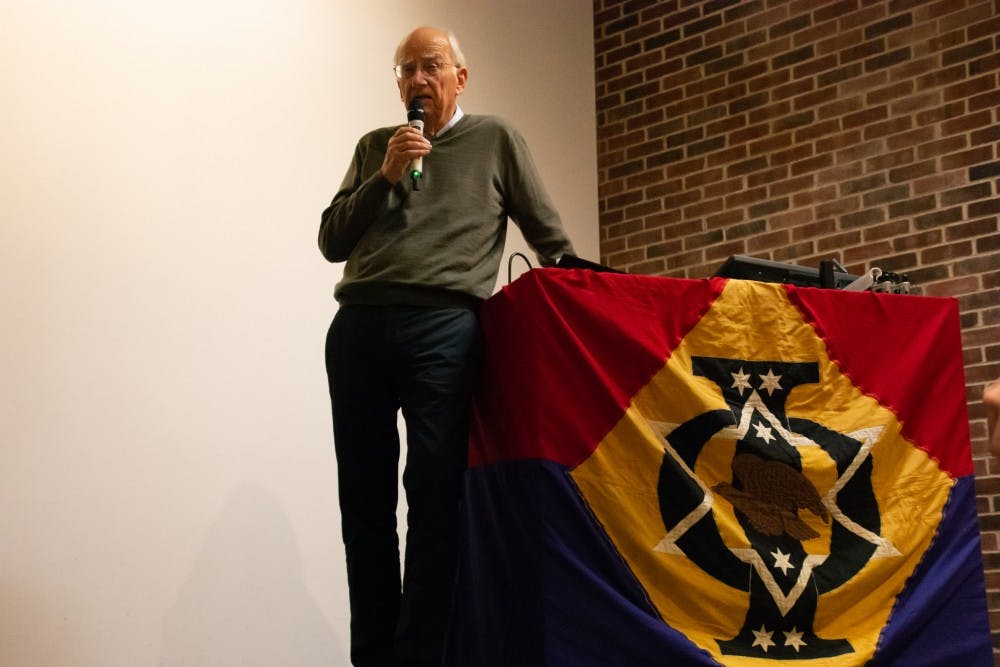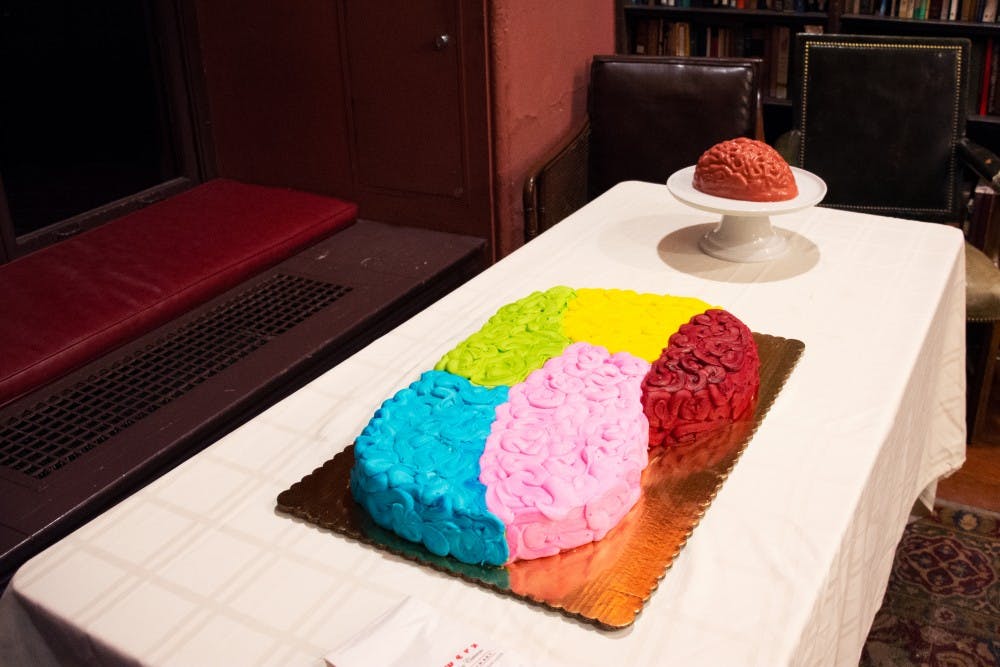
University of California, Santa Barbara psychology professor Michael Gazzaniga spoke about the relationship between consciousness and neuroscience to a crowd of around 300 students at Meyerson Hall on Tuesday. Gazzaniga, who is known as the founder of cognitive neuroscience, was the invited speaker of the 205th Philomathean Society's Annual Oration Lecture.
During the presentation, Gazzaniga talked about his famed split-brain studies. He said that in his studies of patients whose brain hemispheres had been disconnected, he found that the two hemispheres could still function as if they were stitched together.
His studies on split-brain patients led him to develop a theory of consciousness that aims to close the gap between neurons and the mind, an issue that many scientists have attempted to address, he said.
“One of Philo’s mottos over the years has been, 'raising hell with our brains,'” said College senior Julia Pan, who is the Philomathean Oration Director. “This year, we are perhaps doing that literally."
Pan said Gazzaniga was a natural choice because his work in cognitive neuroscience influenced many Penn students, as he is an author of many standard Penn introductory psychology and neuroscience textbooks.
College sophomore Adriana Discher said she was very excited to see the author of her Psychology 001 textbook give a lecture.
“I don’t want to say [psychology] was super Freudian before he existed, but in terms of combining the fields of neuroscience and psychology, I think he’s been a really big player in that," Discher said.
Fellow College sophomore Ana Acevedo was also drawn to the Oration Lecture. She attributed her interest to her belief that Gazzaniga is “the man in the field.”

Gazzaniga also talked about historical views of consciousness, such as how Egyptians attributed consciousness to aspects of nature, such as the Nile River. He compared these historical views with more modern theories before he discussed his own perspectives.
He then talked about the studies he conducted to explore the "total specific modules [in the brain] that interact to produce our conscious state." Each individual module performs one specialized task, whose product "bubbles" to the surface of consciousness.
“These various modules come up at any one moment through time, and they occupy that sense of consciousness you have at that particular moment,” he said.
The event concluded with a reception that included brain-themed mocktails and a brain cake (with all four lobes labeled).

The Daily Pennsylvanian is an independent, student-run newspaper. Please consider making a donation to support the coverage that shapes the University. Your generosity ensures a future of strong journalism at Penn.
Donate




